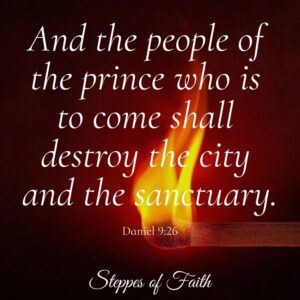
“And the people of the prince who is to come shall destroy the city and the sanctuary.” Daniel 9:26
After Herod’s death, construction of the Second Temple continued for many more years until its glorious completion in 66 A.D. It was the masterpiece of the Middle East. During that time, the Jewish people continued to congregate at the Temple three times a year as God instructed in the Torah, and the High Priest performed the annual atoning ceremony on Yom Kippur. It was largely a peaceful, wonderful time in Jerusalem.
Unfortunately, four years after the Temple’s completion, it was utterly destroyed by the Roman army. Why would the Romans demolish such a beautiful place? What was the issue? And now, we’re left to ask if there is anything left of it? We also can’t help but wonder if the Temple will ever be rebuilt.
Let’s look at the Temple’s historical destruction first.
We know the Roman government ruled with an iron hand. They were going to have their way no matter what. At the same time, the Jewish people failed to remember something very important—that the Temple’s destruction was already predicted by Jesus Himself and by Daniel the prophet hundreds of years prior.
Prediction of Destruction
Of all the Old Testament prophets, Daniel was the only one who predicted the destruction of the Temple. Daniel was a highly regarded Jewish prophet, so the Jewish people would have/should have known of his prediction.
“And after the sixty-two weeks, Messiah shall be cut off, but not for Himself; and the people of the prince who is to come [the Romans] shall destroy the city and the sanctuary.” Daniel 9:26 (my addition)
Over five hundred years later, Jesus also predicted the Temple’s destruction during His final week on earth. And not just once, but several times.
“Now as He drew near [Jerusalem on Palm Sunday], He saw the city and wept over it, saying, ‘If you had known, even you, especially in this your day, the things that make for your peace! But now they are hidden from your eyes. For days will come upon you when our enemies will build an embankment around you, surround you, and close you in on every side, and level you, and your children within you, to the ground; and they will not leave in you one stone upon another because you did not know the time of your visitation.” Luke 19:41-44 (my addition)
“Then Jesus went out and departed from the temple, and His disciples came to Him to show Him the buildings of the temple. And Jesus said to them, ‘Do you not see all these things? Assuredly, I say to you, not one stone shall be left here upon another, that shall not be thrown down.’” Matthew 24: 1-2
“But when you see Jerusalem surrounded by armies, then know that its desolation is near. Then let those in Judea flee to the mountains, let those who are in the midst of her depart, and let not those who are in the country enter her.” Luke 21:20-22
Though it wasn’t a highly discussed topic, Daniel and Jesus both tried to warn the Jewish people about the Temple’s destruction. And just as predicted, the day finally came.
The Roman Destruction
In 66 A.D., certain Jews, including the priests, rebelled against Roman authority in the northern part of Judea because they were tired of making daily sacrifices as a substitute for emperor worship. Their rebellion spawned the Great Revolt.
Emperor Nero sent out an army under General Vespasian to quell the rebellion, which they did two years later. Later that same year, Nero committed suicide, and Vespasian eventually became Emperor. Vespasian quickly turned his attention to Jerusalem and commanded his son, General Titus, to lead the assault.
For the next two years, Titus’ Roman army surrounded Jerusalem on all sides and tried to bring the city to its knees by cutting off all commerce and supplies and starving the Jews, many to death until the bodies filled the streets. When it was clear the Jews would not give up, Titus decided to invade the city.
By this time, the Roman Empire was fed up with rebellious Jews. Plus, Titus wanted to rededicate the Jewish Temple to his father, Emperor Vespasian. So, on the ninth day of Av, which was August 10, 70 A.D., Titus’ army breached Jerusalem’s walls and set about to destroy the city.
According to first-century historian Flavius Josephus in his book The Wars of the Jews (Book 6, ch.4), by the time the Roman soldiers penetrated the Temple’s plaza walls, they were completely enraged. The Jews who tried to defend the Temple, feeling tired and sick, ended up retreating and hiding inside the Temple. Titus planned to storm the Temple the next morning, but his men would not wait.
Though he ordered his men not to touch the Temple and to only encamp around it, the soldiers outright disobeyed and grabbed their torches. Titus and his commanders rushed to the scene and commanded the soldiers to extinguish the flames. They even tried to put out the fire themselves, but the men would not listen and continued their onslaught, slitting the throats of every man, woman, and child they saw along the way.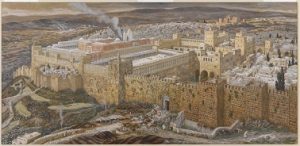
Burning the Holy of Holies
The Roman soldiers’ lust for blood and the riches hidden in the Temple were too great to overcome. So great the soldiers trampled each other, many dying in the process. Their bodies surrounded the altar of incense in the Priest’s Court, and their blood ran down the steps of the Nicanor Gate and into the Woman’s Court.
Josephus was near the Temple when the attack began. He records the event this way:
“These Romans put the Jews to flight and proceeded as far as the holy house itself. At which time one of the soldiers, without staying for any orders, and without any concern or dread upon him at so great an undertaking, and being hurried on by a certain divine fury, snatched some out of the materials that were on fire, and being lifted up by another soldier, he set fire to a golden window, through which there was a passage to the rooms that were round about the holy house, on the north side of it. As the flames went upward, the Jews made a great clamour, such as so mighty an affliction required, and ran together to prevent it; and now they spared not their lives any longer, nor suffered anything to restrain their force, since that holy house was perishing . . . thus it was the holy house burnt down.” (Book 6, ch.4.251-253, 266)
The Jews trapped inside the Temple all burned to death. A few priests attempted to defend themselves by using the golden spikes on the top of the Temple as weapons, but that did no good. They, too, burned to death.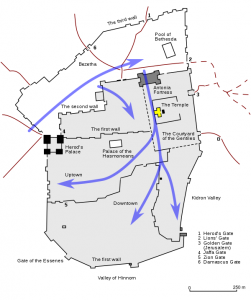
The Romans then burned the Temple gates and the treasury chambers. They also burned the cloisters of the Gentile Court, where Josephus estimates 6,000 women and children were hiding in desperation after obeying a false prophet to “get upon the temple, and that there they should receive miraculous signs of their deliverance.” Josephus then writes, “Nor did any one of them escape with his life.”
After standing for 639 years beginning in the time of the Old Testament prophet Haggai, God’s holy temple was completely destroyed.
What’s very interesting about the Roman attack is that it occurred on the exact same day as when Solomon’s Temple was destroyed by King Nebuchadnezzar 491 years earlier.
Roman Looting and Prophecy Fulfilled
As the flames engulfed the Temple, gold and silver and any other precious metals stored in the Temple melted and dripped in between the broken stones and cracked walls. The Roman soldiers pried apart the stones with long bars to recover the treasure. The soldiers looted the Temple treasury and all the furnishings and taken to Rome. In this way, Jesus’ prediction in Matthew 24:2 that “not one stone would be left upon another” came true.
With Jerusalem left in ruins, the Jewish survivors left the city, thus beginning the second exile. A remnant of Jews remained, however, and they gathered every year inside what was left of the sanctuary on the date of the Roman attack to pray and weep over the Temple’s destruction.
For the next 100 years, the Jews hoped to rebuild the Temple, but Roman Emperor Hadrian instead dug up the Old City intending to create a new city called Colonia Aelia Capitolina. Hadrian never built the city after the Jews rebelled (again).
And so, the Temple Mount remained broken and abandoned until the Muslim prophet Ibrahim ordered the Al Aqsa mosque to be built on the same site in 691 A.D after the Muslims captured Jerusalem in 637 A.D. The mosque greatly angered the Jews, of course, since they still claimed (and continue to claim) the Temple Mount as their own.
The Well of Souls
If you’re a fan of the Indiana Jones movies, you no doubt remember the Well of Souls where Indiana and his partner descended by rope into a huge underground chamber full of giant golden Egyptian statues and, of course, snakes. The movie focuses on finding the Ark of the Covenant in Egypt after a certain pharaoh stole it from Israel.
But that’s a different Well of Souls. There is another, and it’s found specifically at the spot where the Holy of Holies was located. It’s also the site of the Muslim Dome of the Rock, which is near the Al Aqsa mosque.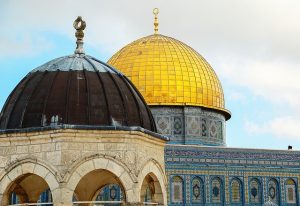
The bedrock floor under the dome is called the Foundation Stone, which is where Mount Moriah and, later, the Holy of Holies once stood. It’s the site where Abraham prepared to sacrifice his son, Isaac, and where the prophet Muhammed presumably ascended to heaven. For Jews, it is the holiest site in Judaism, and for the Muslims, it’s their third holiest site.
It’s called the Well of Souls because there is a partially man-made cave under the Foundation Stone. You might remember this is the site where King Herod surrounded Mount Moriah with retaining walls and filled it in to create the Temple plaza. A pocket of sorts may have formed, or perhaps it was created on purpose. There is no evidence either way.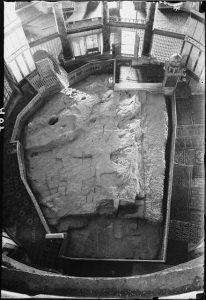
According to the Jewish Talmud, the cave is the center of the world and covers an abyss containing the raging waters of the Flood. Muslim folklore also says it’s the center of the world, and it contains a bottomless pit of the flowing waters of Paradise where you can hear the spirits of the dead as they wait for Judgement Day.
It’s said that if you hit the bedrock, you would hear a hollow echo. Archaeologists believe the echo is from a fissure in the rock (seen in the upper-left portion of the stone), but no one has properly explored.
Crusaders and Muslims
In the summer of 1099, Christian Crusaders captured Jerusalem from the Muslims. They converted the Dome of the Rock into a church they called Templum Domini (Latin, “Temple of the Lord”) beginnning with extreme changes to the Foundation Stone. They enlarged the opening to the cave, cut away a significant amount of the rock to install staircases, overlaid the Foundation Stone with marble, and created a shaft that ascends from the center of the cave.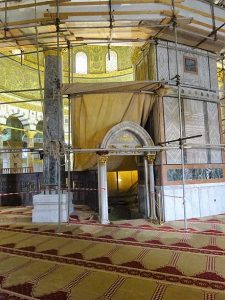
The Muslims retook the Dome of the Rock (and, consequently, the Holy of Holies) less than one hundred years later and continue to possess it as well as the Al Aqsa mosque today. The changes the Crusaders made are still there, and visitors are occasionally allowed to go inside, depending on the political climate.
Temple Archaeology
Only the Second Temple’s western retaining wall, now known as the Wailing or Western Wall, fully survived the Roman attack. Portions of the eastern wall with the Golden Gate also still stand, though the gate has been walled up.
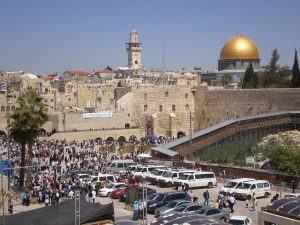
As a matter of safety, the Israel Defense Forces no longer permit Jews to enter the Temple grounds and its ruined sanctuary. Next to the Foundation Stone, this makes the Western Wall the holiest site in modern Judaism. It is the closest worshippers can get to the locations of the former courts and the destroyed Holy of Holies.
If you visit the Temple today, you can still see the ornamental pilaster and the beginning of Robinson’s Arch, which was part of a large viaduct leading to the upper city. And on the southern side, you’ll find traces of the main road leading to three entry gates: The Kindling Gate, the Gate of Firstlings, and the Water Gate. (Historical side note: Archaeologists have recently discovered evidence that Pontius Pilate most likely constructed the main road.)
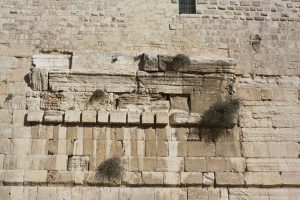
In the 1960s, archaeologist Benjamin Mazar led a team to excavate the Temple under British mandate (because Britain controlled Israel at the time). Before the Six-Day War in 1967, he found the cornerstone.
Later in 2007, Israeli archaeologists and members of the Israel Parks and Nature Authority began the first-ever project to remove decorative tiles recovered from the Temple in an attempt to restore sections of the floor and roof. The team put the restored tiles on museum display in 2016.
The Temple Mount Sifting Project also removed over 600 colored shards of tile and restored them to the style of the Second Temple’s period.
A Third Temple?
The Bible clearly indicates there will be a Third Temple. We don’t know exactly when it will be built, but we do know that the Jewish people will have already begun making animal sacrifices again. In fact, Jewish activists already began sacrificing animals since at least December 2018, if not earlier.
The offering of animals for sacrifice without an established temple is nothing new. In Ezra 3:1-3, the Israelites gathered together “as one man to Jerusalem” to build a new altar and make sacrifices even before the Temple (Solomon’s Temple) had been restored following their liberation from Babylon. It is entirely possible (and probable) this will happen again.
In addition to making animal sacrifices again, we know a Third Temple will be built because of what the apostle Paul says in 2 Thessalonians 2:3-4.
“Let no one deceive you by any means; for that Day will not come unless the falling away comes first, and the man of sin is revealed, the son of perdition [the antiChrist], who opposes and exalt himself above all that is called God or that is worshiped, so that he sits as God in the temple of God, showing himself that he is God.” [my addition]
Here, Paul is describing the Tribulation Period and how the antiChrist will cut off animal sacrifices so he can sit in the Temple and proclaim that he is God. So, clearly, there will be a Third Temple.
But like so many other things, the Third Temple will also be destroyed one day. When Jesus returns and the Tribulation is over, after Satan is destroyed (Revelation 20:10), after the new heavens and a new earth are created and New Jerusalem descends through the clouds (Revelation 21:1-2; 9-27), the Third Temple will be long gone.
Instead, a new, permanent Temple will be established. God Himself will be the Temple in which everything will eternally exist (Revelation 21:22).
His limitless presence and glory will fill the entire new heavens and new earth so that we can dwell with Him once again, just as Adam and Eve did. Instead of entering a building or some outside court, we will personally encounter God in a real and tangible way directly in His beautiful presence.
There will be no more sorrow, no more tears, no more fear, and no more evil. And certainly, no Roman army bent on destruction. Instead, we can look forward to an eternity of beauty and peace spent with Jesus Christ, the Lord of our salvation.
It will be so glorious! I can’t wait to see it.
Many heartfelt thanks to Chantale. Your contributions to this article are so much appreciated.
Further Reading
This was part four of this series about the history of the Second Temple. If you missed parts one through three, it’s easy to catch up. Thanks for reading!
Part One: Herod and His Magnificent Temple
Part Two: A Walking Tour of the Second Temple and Its Courts
Part Three: Inside the Blessed Holy of Holies and the Sacred Veil
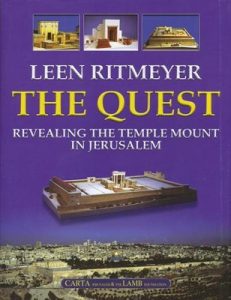
Leen Ritmeyer of the Temple Mount Excavations details in his book the excavation process of the Temple following the Six-Day War in 1967. The book includes hundreds of full-color maps, plans, illustrations, and photos along with vivid views of the Temple through the ages. With first-hand knowledge of the parts of the Mount that are now inaccessible, Ritmeyer’s The Quest: Revealing the Temple Mount in Jerusalem is a wonderful resource if you’re interested in learning more about the Temple’s history.
Excellent job. Well researched. Appreciate your knowledge.
Thanks for reading, Renee. God bless!
One point that you didn’t mention is that Jesus’s and Daniel’s prophesies have a larger fulfillment in the near future. This will mean life for a relative few people and death for ALL of the rest! Are you willing to bet your life on which group you’re in?
I know which group I’m in. Do you?